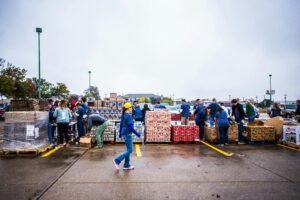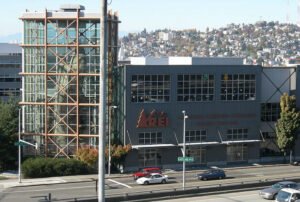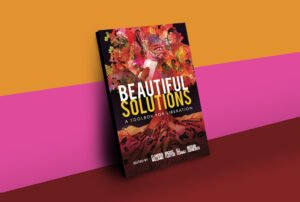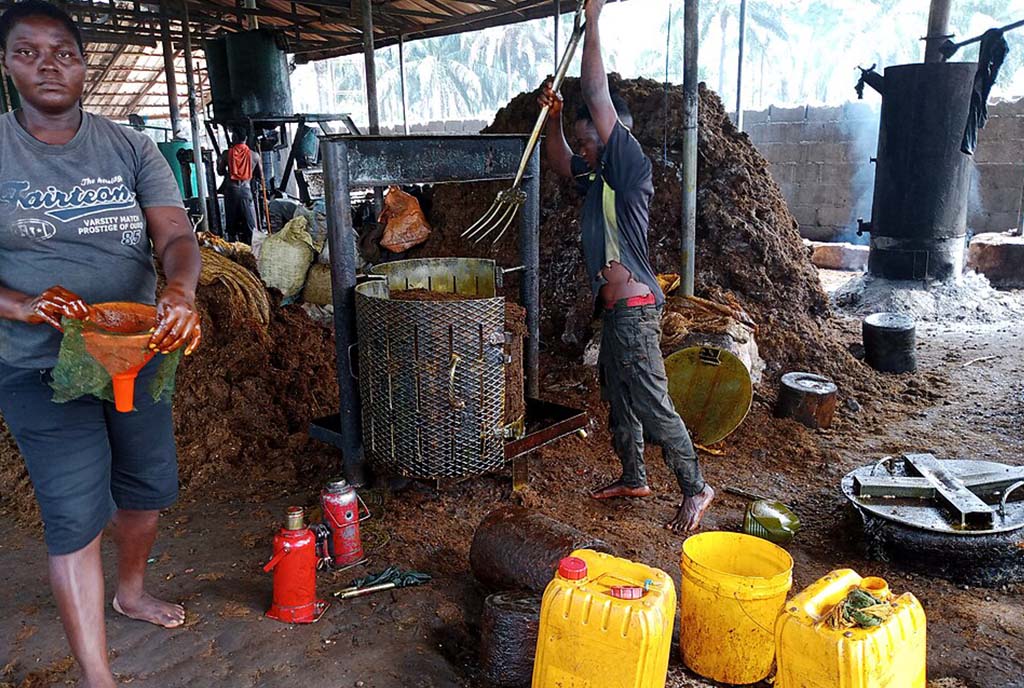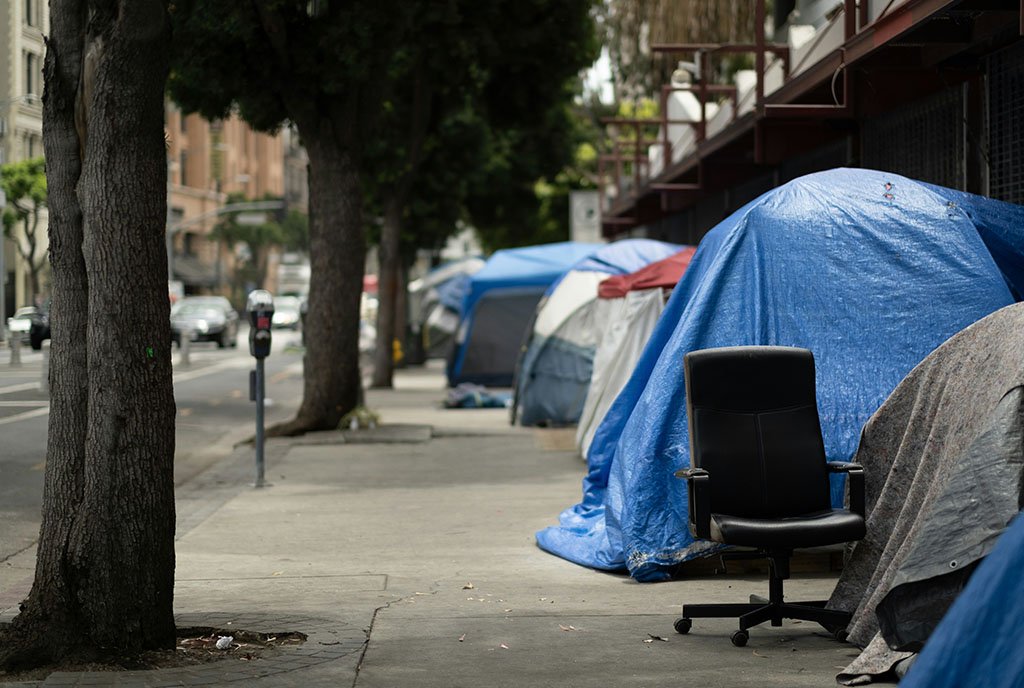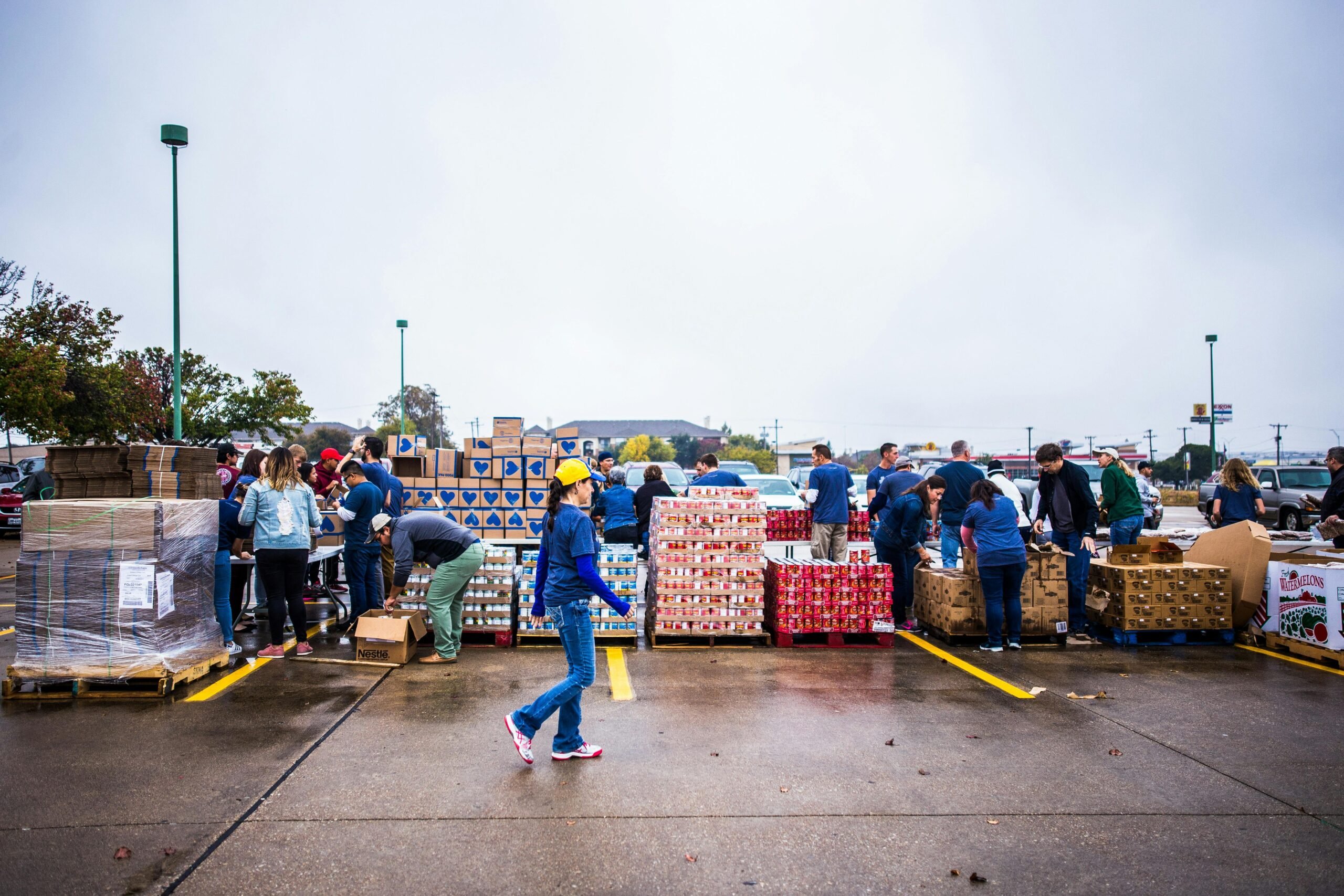
At the New Growth Innovation Network’s Cityscapes Summit, held in May in Durham, NC, the commitment to igniting inclusive economies—the conference’s theme—was palpable. Inspiring projects ranged from supporting Black communities to access credit in Arkansas to designing a community-controlled investment fund in the Hudson Valley.
Yet something was missing. The current paradigm of economic development traps professionals into believing that economic growth is synonymous with big business attraction and retention. Even many who share a more grassroots outlook often implicitly accept this, resulting in projects of economic inclusion that remain at the margins, rather than the center, of our economy.
Why is this? Missing in far too many efforts—and critical to supplanting existing economic development models rooted in capitalism—is a commitment to fostering collective ownership of key economic assets: land, labor, and capital.
False Promises, Empty Deals
On Friday, the final day of the Cityscape Summit, I had an early flight home. In the Lyft to the airport, the driver and I made small talk, and I learned that his main job was as a chef. Why would a chef move from New York City to Durham’s tech-based Research Triangle? The answer, to him, was plain and simple: big businesses like Apple and Google had been moving into the region, which meant more opportunity and prosperity.
Missing in far too many efforts…is a commitment to fostering collective ownership of key economic assets: land, labor, and capital.
I was stunned. I had just spent three days bemoaning the limits of current economic development models that prioritized attracting tech firms as the key driver of economic growth. Negotiated as sizable tax breaks in exchange for lofty promises of more jobs and targeted social investment, these dealings between city governments and corporate giants often benefit the latter at the expense of community residents and neighborhoods.
When I lived and worked in Baltimore City, Kevin Plank, CEO of Under Armour, and his grand plans for a corporate campus in the Port Covington neighborhood were the talk of the town. Using tax increment financing (TIF), Baltimore’s city council approved $660 million in financing for the project in 2016, essentially redirecting tax revenues from the city’s most underserved population to an up-and-coming, transplant “creative class” for four decades. Eight years and delayed construction timelines, layoffs, and a broken Community Benefits Agreement later, residents and city leaders wonder if this was the best way to grow Baltimore’s local economy.
The Current Paradigm of Economic Development
Among most practitioners, economic development is still regularly defined as “creating the conditions for economic growth and improved quality of life by expanding the capacity of individuals, businesses, and communities to maximize the use of their talents and skills to support innovation, job creation, and private investment.”
The key word here is “creating.” This framework assumes that economic growth is inextricably linked to novelty—new ideas, new jobs, new investments. Further, it assumes that the capacity of local individuals and businesses must be expanded and maximized—ecological limits be damned—not for communities’ own sake but for their overall attractiveness to private investors. As a result, the priority for economic development practitioners can sometimes become about crafting dog-and-pony shows for the 1 percent, while existing local assets wilt from underinvestment.
At the Cityscape Summit, one panelist from Omaha alluded to the aftermath of a $1.5 billion Facebook data center built in Sarpy County: “It never really got to those communities like North Omaha.” A project that had guaranteed 300 new jobs has instead gobbled up 900 acres of agricultural land and left many workers with transient, underpaying employment.
Some cities, fortunately, are beginning to rethink this model. From incubating worker cooperatives to subsidizing community land trusts, often under the broad label of community wealth building (CWB), city governments are investing in small-scale projects that root wealth locally and cultivate democratic participation among residents. But without directly confronting existing power structures—namely, those that determine who own and governs land, labor, and capital—these projects will remain a “nice to have,” their ability to transform local economic systems at the root limited.
The most progressive economic development programming that does not address, repair, and redesign systemic barriers will be relegated to the margins.
Take Chicago, for example. Three years ago, the mayor’s Office of Equity and Racial Justice and the Department of Planning and Development made a historic $15 million seed investment in a pilot to advance cooperative enterprise, community investment vehicles (CIVs), limited-equity housing cooperatives, and community land trusts. Even with an infusion of up to $150,000 each to 10 worker cooperatives, four CIVs, seven limited-equity housing cooperatives, and five community land trusts, a city-issued report contends that many of the initiatives continue to “lack a clear project scope, project manager, governance bylaws, design and engineering documents, defined cost estimates, financial proforma, and compatible zoning or project sites….This issue is especially acute for small businesses and nonprofits located in South and West side communities that have systemic barriers to accessing capital and that were disproportionately impacted by the COVID-19 pandemic” (31).
In the City of Richmond, the “first-born” of CWB approaches anchored within a local government, many staff at the nearly 10-year-old Office of Community Wealth Building wonder if what they are doing is, in fact, community wealth building. What started as an ambitious approach to reduce poverty in the city by 40 percent by 2030 has become watered down to a fairly rudimentary one rooted in workforce development and financial empowerment services.
What does this tell us? Even with dedicated funding and infrastructure, the most progressive economic development programming that does not address, repair, and redesign systemic barriers will be relegated to the margins, and the economic machine will continue to operate business as usual.
As David Cobb and Emily Kawano observe, “Public banking, community land trusts, worker cooperatives, participatory budgeting, and universal basic income are some specific economic policies that we think of as having the potential to be non-reformist reforms.…At the same time, all these examples can happily coexist and unwittingly even strengthen capitalism, unless they are embedded in a transformative program.”
So, what’s the transformative program?
The Ownership Frame
This questioning of the current paradigm of economic development models is not new. “High road” economic development efforts like Good Jobs First and the High Road Strategy Center have long advanced research and led campaigns to critique and delegitimize the current business subsidy regime.
On another path, activists within the solidarity economy movement, proponents of restorative economics, Just Transition framework creators, and advocates for radical municipalism have proposed rigorous analyses of the current system alongside radical alternatives and solutions. As a fellow of the Democracy Collaborative, the particular frame I employ is community wealth building, a term and approach coined by the Collaborative in 2005 that focuses on enabling community members to build wealth through community ownership.
At the heart of these various approaches is a central argument: if capitalism consolidates ownership of the key assets of our economy—land, labor, capital—in the hands of a few, then an alternative system must center collective ownership of those assets.
A key facet of a focus on ownership is emphasizing the value of not only redistribution but also pre-distribution. Redistribution is the classic “tax and spend” approach. It typically accepts the distribution of assets as given but taxes the wealthy to share benefits with the broader population. Pre-distribution, by contrast, seeks to put systems, structures, and governance models in place, so that the distribution of wealth and income is more equal to begin with.
Sign up for our free newsletters
Subscribe to NPQ's newsletters to have our top stories delivered directly to your inbox.
By signing up, you agree to our privacy policy and terms of use, and to receive messages from NPQ and our partners.
Essentially, an ownership frame compels us to ask about the distribution of assets and provides a tool to answer the question. If “economy” is the management of home, why should we cede the democratic management authority of our collective home to a few?
Using an Ownership Frame at the Local Level
What might economic development that centers collective ownership look like? Achieving its aims of economic prosperity, racial equity, and ecological sustainability requires intervention in many areas. At the Democracy Collaborative, we focus on the following five pillars:
- Inclusive and democratic enterprise
- Fair work
- Just use of land and property
- Locally rooted finance
- Progressive procurement
The first two speak to labor as an asset to be collectively owned, the third to land, and the final two to capital flows. While the efforts I discuss below are still in their nascent stages, their commitment to collectivizing ownership of labor, land, and capital is noteworthy—and could contain the seeds of a new approach to economic development.
Changing business ownership in Denver
From the work of the Rocky Mountain Farmers Union to the Rocky Mountain Employee Ownership Center, the roots of worker ownership run deep in Colorado. Today, the Center for Community Wealth Building (CCWB) in Denver does cooperative development and more.
Facing intense gentrification, CCWB leaders saw an opportunity to expand collective ownership in the city by investing in a cooperative ecosystem. In 2023, the CCWB supported four groups in completing the Denver Foundation’s Strengthening Neighborhoods grant, which provides seed funding to help with the operational expenses associated with launching a cooperative. They also developed more than 20 cooperative businesses in the metropolitan area, including three childcare cooperatives. Finally, they provided cooperative education via a train-the-trainer model to 16 individuals so that they may advance cooperative development in their own neighborhoods.
Changing land ownership in Seattle
Another example: leaders of the People’s Economy Lab (PEL) seek to address racial injustice and environmental degradation in Seattle, WA. To do this, PEL organizers have been working for years to help city leaders see the need for community ownership of land, specifically real estate.
When communities—not speculators—steward the land, it is no longer seen as a commodity to be capitalized but as a resource to be shared. As a result, land is used for community benefit—for housing, local business, or regenerative food systems.
In Othello, a neighborhood on the south side of Seattle, residents petitioned the Seattle Housing Authority to sell 3.2 acres of land to HomeSight, a community development nonprofit, to develop the property in collaboration with residents. Today, Othello Square is slated to be a “culturally relevant and welcoming place” that includes cooperatively controlled housing, education, childcare, healthcare, a credit union, and community meeting spaces.
Changing capital ownership in St. Louis
Lastly, community control of capital is a critical piece of the economic development puzzle. Typically, financial capital is controlled by commercial banks whose primary purpose is to maximize profits for their shareholders around the world. For local communities, this results in underinvestment.
In St. Louis, however, leaders of the nonprofit WEPOWER are piloting (like many cities around the country) what it might look like to have a community-controlled pool of money or a community investment fund. In this way, collective ownership of capital provides an alternative to maximizing financial return in favor of more sustainable returns to advance community-led projects.
The $1 million pilot fund, WEPOWER Capital, uses revenue-based financing to support Black and Latinx companies, “where entrepreneurs repay a fixed percentage of their revenue until a pre-agreed total has been paid back. This model is more flexible than traditional loans, allowing [WEPOWER] to…share risk with entrepreneurs…without reducing their ownership in their company.”
What if we employed [economic] measures that were more expansive, ones that saw human beings as more than their production value?
Reconceptualizing Economic Development
Of course, while inspiring, the work happening in Denver, Seattle, and St. Louis is not enough. Much of this work is led by intermediary organizations—mostly nonprofits—leveraging their deep ties to local leaders to advance proofs of concept for business, land, and capital ownership.
However, without buy-in from local government and anchor institutions—entities that are largely still embroiled in the clutches of traditional economic development—a dozen businesses, a few acres of land, and a million dollars that are cooperatively owned will not make a tangible difference in the economics of a particular place.
So, what is to be done?
First and foremost, economic development professionals need a new set of metrics to evaluate success. Metrics like job creation, unemployment rates, median household income, and tax revenues rarely paint a comprehensive picture. Ironically, they also reinforce the existing system in which residents have little to no agency.
Instead, what if we employed measures that were more expansive, ones that saw human beings as more than their production value? One example is the Human Flourishing Program at Harvard’s Institute for Quantitative Social Science’s flourishing index measure, which incorporates five central domains: happiness and life satisfaction, physical and mental health, meaning and purpose, character and virtue, and close social relationships—all of which have been correlated with an increase in collective ownership.
Next, local governments are uniquely positioned to build ecosystems within which collective ownership is not only incentivized but also at the core of all economic development strategies in a particular place. For example, in a 2021 report, staff of the CCWB recommend a series of tactics the City of Denver can employ to expand the cooperative sector in the city. One notable strategy? Leveraging the city’s existing economic development tools (that is, real estate holdings, procurement processes, technical assistance providers, permitting and licensing, and so on) to prioritize the expansion and success of cooperatively owned businesses in Denver.
Local governments can also act to curb real estate speculation and encourage collective land ownership. In their more recent report, organizers of the PEL in Seattle advocate for statewide tenant or community opportunity to purchase laws to make democratically owned and managed housing more viable. At the same time, policy that curtails speculative land purchasing would also be beneficial.
Building a postcapitalist economy to achieve economic and social justice is a necessary but complicated task. Ultimately, if the current economic system operates on one thousand different fronts, advocates must work on ten thousand different fronts to supplant it—and at the center of those strategies is collective ownership.





